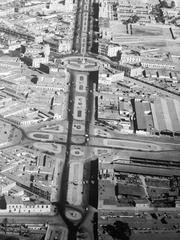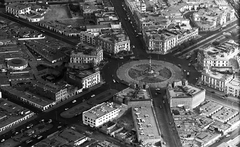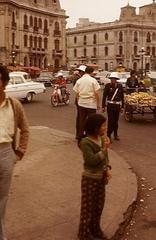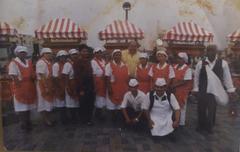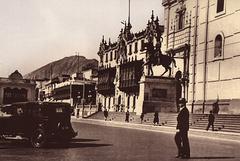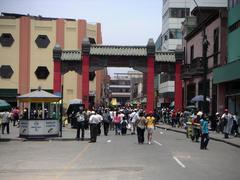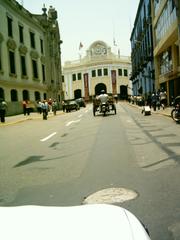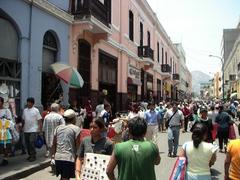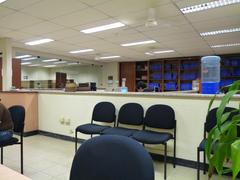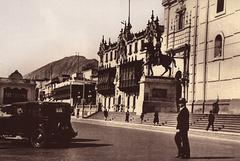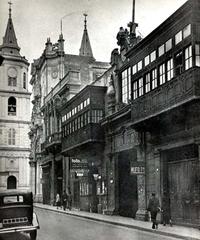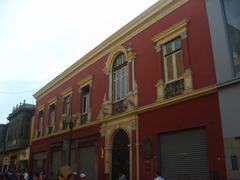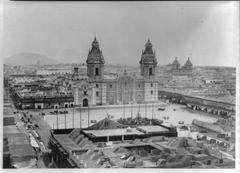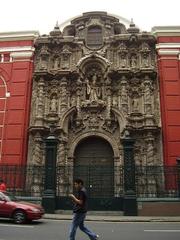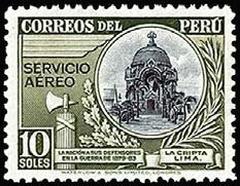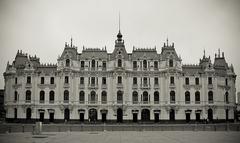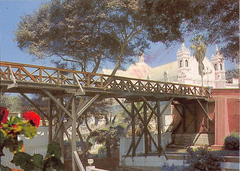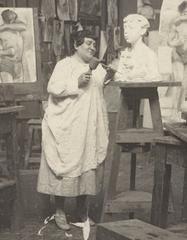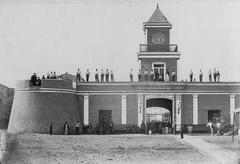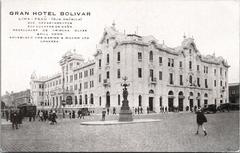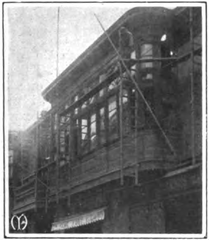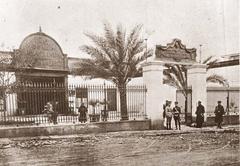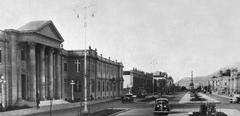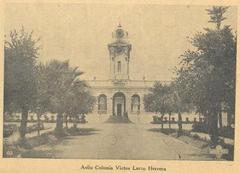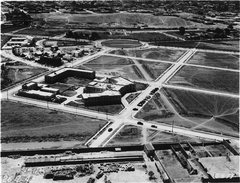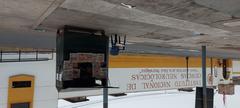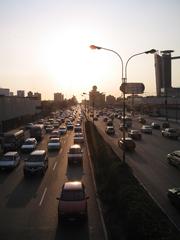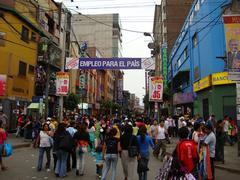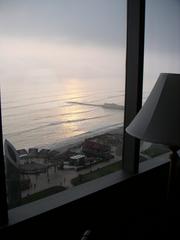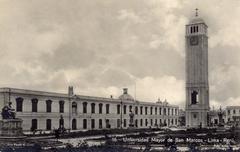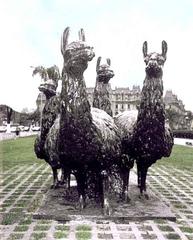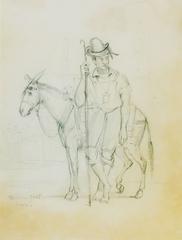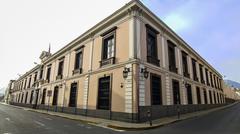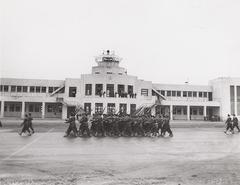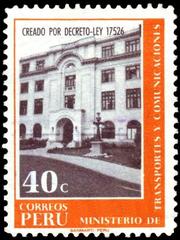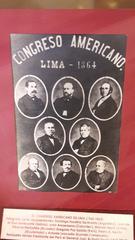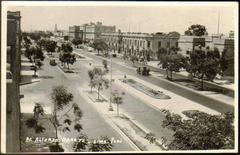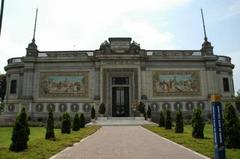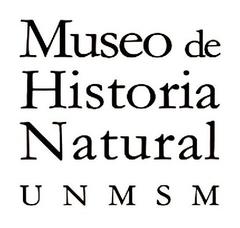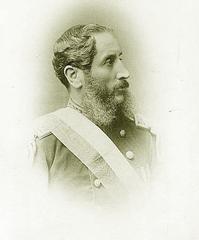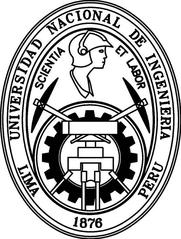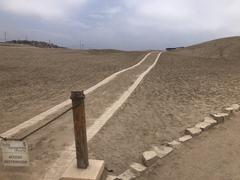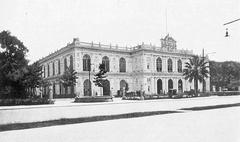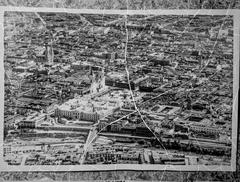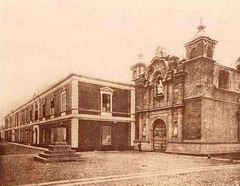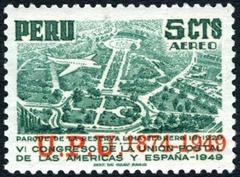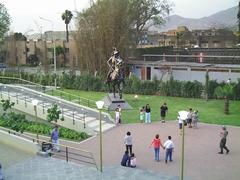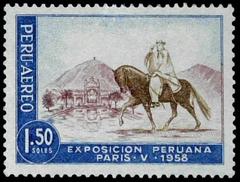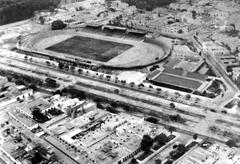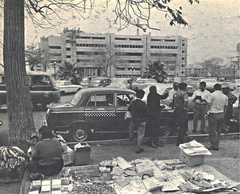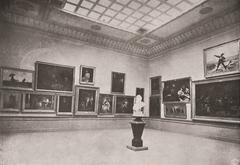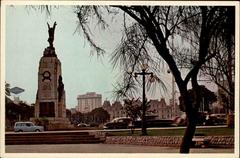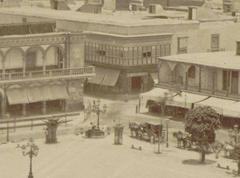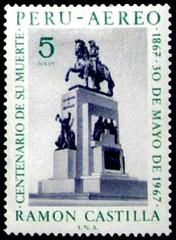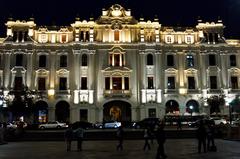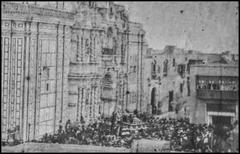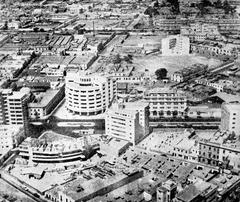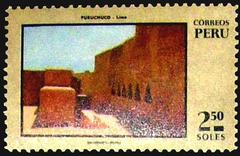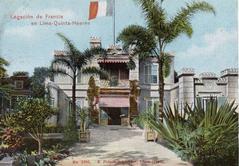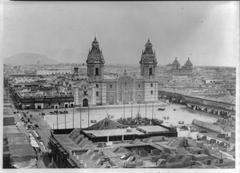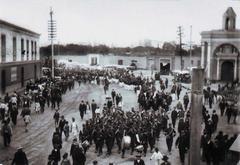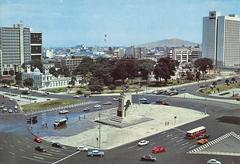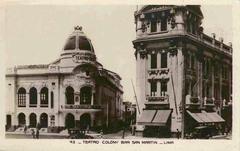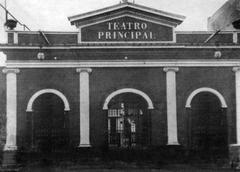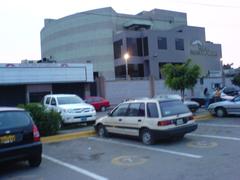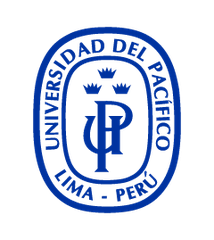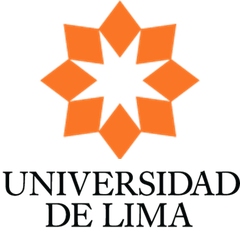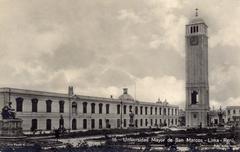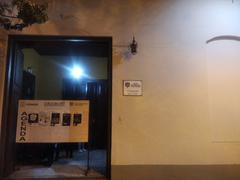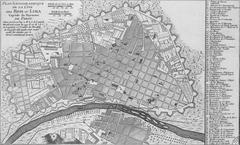
Comprehensive Guide to Visiting Plaza Dos de Mayo, Lima, Peru
Date: 17/07/2024
Introduction
Located in the heart of Lima, Peru, Plaza Dos de Mayo stands as a testament to the city’s rich cultural and historical heritage. This iconic square, inaugurated on July 28, 1874, commemorates the Battle of Callao, a significant event during the Chincha Islands War where Peruvian forces triumphantly defended the port of Callao against a Spanish fleet on May 2, 1866. Named ‘Dos de Mayo,’ which translates to ‘May 2nd,’ the plaza honors this pivotal victory (Peru Travel).
The architectural splendor of Plaza Dos de Mayo showcases late 19th-century design, with its central obelisk crafted by the French architect Émile Robert and sculptor Louis-Léon Cugnot. Surrounding the obelisk are bronze statues representing the four branches of the Peruvian military. This blend of European influence and Peruvian national pride is evident throughout the plaza, making it a unique destination for history enthusiasts and casual tourists alike (Lima Easy).
Beyond its historical significance, Plaza Dos de Mayo has been a focal point for Lima’s urban transformation, political rallies, and social events. It has witnessed the city’s evolution from a colonial outpost to a modern metropolis, with surrounding buildings reflecting neoclassical and French Renaissance architectural styles. Today, ongoing restoration efforts aim to preserve this cultural landmark while adapting it to contemporary urban needs, ensuring it remains a vibrant public space for future generations (El Comercio, Andina).
Whether you are a local or a visitor, exploring Plaza Dos de Mayo offers a deep dive into Lima’s past and present, providing a rich tapestry of historical events, architectural beauty, and cultural activities. This guide aims to offer comprehensive insights into the plaza’s history, visiting hours, travel tips, and more, ensuring a memorable visit to one of Lima’s most cherished landmarks.
Table of Contents
- Introduction
- Origins and Early Development
- Architectural Significance
- Urban Transformation
- Political and Social Hub
- Restoration and Preservation Efforts
- Cultural Significance
- Modern-Day Relevance
- Visitor Information
- Visitor Tips
- FAQ
- Conclusion
Origins and Early Development
Plaza Dos de Mayo, located in the heart of Lima, Peru, has played a significant role in the city’s urban and cultural development. The plaza was inaugurated on July 28, 1874, to commemorate the Battle of Callao, which took place on May 2, 1866. This battle was a crucial event during the Chincha Islands War, where Peruvian forces successfully defended the port of Callao against a Spanish fleet. The plaza’s name, “Dos de Mayo,” directly translates to “May 2nd,” honoring this pivotal victory (Peru Travel).
Architectural Significance
The design of Plaza Dos de Mayo is a testament to the architectural trends of the late 19th century. The central monument, a towering obelisk, was designed by the French architect Émile Robert and sculptor Louis-Léon Cugnot. The obelisk is surrounded by four bronze statues representing the four branches of the Peruvian military - the army, navy, air force, and national police. These statues were crafted in France and shipped to Lima, reflecting the European influence on Peruvian architecture during this period (Lima Easy).
Urban Transformation
In the early 20th century, Plaza Dos de Mayo underwent significant urban transformation. The square became a focal point for Lima’s modernization efforts, with the construction of surrounding buildings that showcased neoclassical and French Renaissance architectural styles. These buildings, many of which still stand today, were designed to house government offices, commercial establishments, and residential apartments, contributing to the plaza’s status as a bustling urban center (El Comercio).
Political and Social Hub
Throughout its history, Plaza Dos de Mayo has been a central stage for political and social events in Lima. During the early 20th century, the plaza was a popular gathering place for political rallies and public demonstrations. It played a crucial role during the political upheavals of the 1930s and 1940s, serving as a venue for speeches and protests against various government policies. The plaza’s strategic location in downtown Lima made it an ideal spot for citizens to voice their opinions and advocate for change (La República).
Restoration and Preservation Efforts
In recent years, efforts have been made to restore and preserve Plaza Dos de Mayo as a historical and cultural landmark. The Peruvian government, along with various cultural organizations, has undertaken projects to renovate the plaza and its surrounding buildings. These efforts aim to maintain the architectural integrity of the area while adapting it to contemporary urban needs. Restoration projects have included the cleaning and repair of the central monument, the refurbishment of facades, and the improvement of public spaces to enhance the plaza’s appeal to both locals and tourists (Andina).
Cultural Significance
Plaza Dos de Mayo holds a special place in the cultural fabric of Lima. It is not only a symbol of national pride and historical memory but also a vibrant public space that hosts cultural events, festivals, and community activities. The plaza’s central location makes it a popular destination for both residents and visitors, offering a glimpse into Lima’s rich history and dynamic urban life. The surrounding area is home to various cultural institutions, including theaters, museums, and galleries, further cementing the plaza’s role as a cultural hub (Peru21).
Modern-Day Relevance
Today, Plaza Dos de Mayo continues to be a significant landmark in Lima. It serves as a reminder of Peru’s historical struggles and triumphs, while also functioning as a lively public space that reflects the city’s ongoing evolution. The plaza’s blend of historical architecture and modern amenities makes it a unique destination for those looking to explore Lima’s past and present. Visitors can enjoy the plaza’s scenic beauty, learn about its historical significance, and participate in the various cultural activities that take place throughout the year (RPP Noticias).
Visitor Information
Opening Hours
Plaza Dos de Mayo is open 24/7, though it is best visited during daylight hours for safety and better visibility of the attractions.
Ticket Prices
There is no entry fee to visit the plaza itself. However, nearby attractions may have their own pricing.
Accessibility
The plaza is wheelchair accessible, and guided tours are available for a more in-depth understanding.
Nearby Attractions
The area around the plaza is home to historic buildings, local cafes, and shops that offer a taste of Lima’s vibrant culture.
Guided Tours
Tours can be booked through local tour operators for those interested in a more detailed exploration of the plaza’s history and significance.
Visitor Tips
Best Time to Visit
The best time to visit Plaza Dos de Mayo is during the dry season, which runs from May to October, when the weather is typically mild and pleasant. Early morning or late afternoon visits can offer ideal lighting for photography and a less crowded experience.
Safety Tips
While Plaza Dos de Mayo is generally safe during the day, visitors should keep an eye on their belongings and avoid displaying valuable items. It is advisable to stay within well-lit and populated areas, especially in the evening (U.S. Department of State).
Exploring the Plaza
The centerpiece of the plaza is the Monument to the Heroes of the War of the Pacific, a stunning bronze and marble structure. Surrounding the plaza are historic buildings, including the Gran Hotel Bolívar, famous for its Pisco Sours (Gran Hotel Bolívar).
Dining Options
For traditional Peruvian cuisine, head to El Rinconcito Arequipeño. For a more casual experience, try street food vendors offering local snacks like anticuchos and picarones. For international cuisine, La Bodega Verde offers organic coffee and healthy meals (TripAdvisor).
Shopping and Souvenirs
Nearby, the Mercado Central offers handmade crafts and fresh produce. For upscale shopping, visit the Jockey Plaza Shopping Center (Jockey Plaza).
Cultural Etiquette
Peruvians are generally warm and friendly. Simple greetings like “Buenos días” or “Buenas tardes” are appreciated. Dress modestly when visiting religious sites or monuments. Tipping is customary but not mandatory.
Photography Tips
For the best shots, visit the plaza early in the morning or late in the afternoon. Avoid taking photos of people without their permission.
Language Tips
While many people in Lima speak some English, learning a few basic Spanish phrases can enhance your experience. Common phrases like “¿Dónde está…?” and “Gracias” can be very useful (Duolingo).
FAQ
What are the visiting hours for Plaza Dos de Mayo? Plaza Dos de Mayo is open 24/7, but it is best visited during daylight hours.
Are there guided tours available? Yes, guided tours are available and can be booked through local tour operators.
Is there an entrance fee for Plaza Dos de Mayo? No, there is no entrance fee to visit the plaza itself.
How can I get to Plaza Dos de Mayo? The plaza is accessible by taxi, bus, and the Lima Metro. Walking from nearby attractions is also an option.
What safety precautions should I take? Keep an eye on your belongings and be aware of your surroundings, especially in crowded areas.
Conclusion
Plaza Dos de Mayo stands as a symbol of Peru’s resilience and historical legacy. Its significance extends beyond its historical roots, serving as a vibrant cultural hub and a testament to the nation’s enduring spirit. For visitors to Lima, a visit to Plaza Dos de Mayo offers a rich and immersive experience, blending history, culture, and community in one of the city’s most iconic settings.
By following the tips and information provided in this guide, you can ensure a safe, enjoyable, and enriching experience at Plaza Dos de Mayo. Whether you’re capturing stunning photographs of the architectural details, immersing yourself in the local culture, or simply enjoying the vibrant atmosphere, a visit to this iconic square offers a unique glimpse into the heart of Lima’s history and contemporary life.
For more travel tips and updates, follow us on our social media channels and download the Audiala mobile app for a comprehensive travel guide.
References
- Peru Travel. (n.d.). Battle of Callao. Retrieved from https://www.peru.travel
- Lima Easy. (n.d.). Plaza Dos de Mayo. Retrieved from https://www.limaeasy.com
- El Comercio. (n.d.). Urban Transformation of Plaza Dos de Mayo. Retrieved from https://elcomercio.pe
- Andina. (n.d.). Restoration Efforts at Plaza Dos de Mayo. Retrieved from https://andina.pe
- La República. (n.d.). Historical Significance of Plaza Dos de Mayo. Retrieved from https://larepublica.pe
- RPP Noticias. (n.d.). Modern-Day Relevance of Plaza Dos de Mayo. Retrieved from https://rpp.pe
- TripAdvisor. (n.d.). Visitor Tips for Plaza Dos de Mayo. Retrieved from https://www.tripadvisor.com
